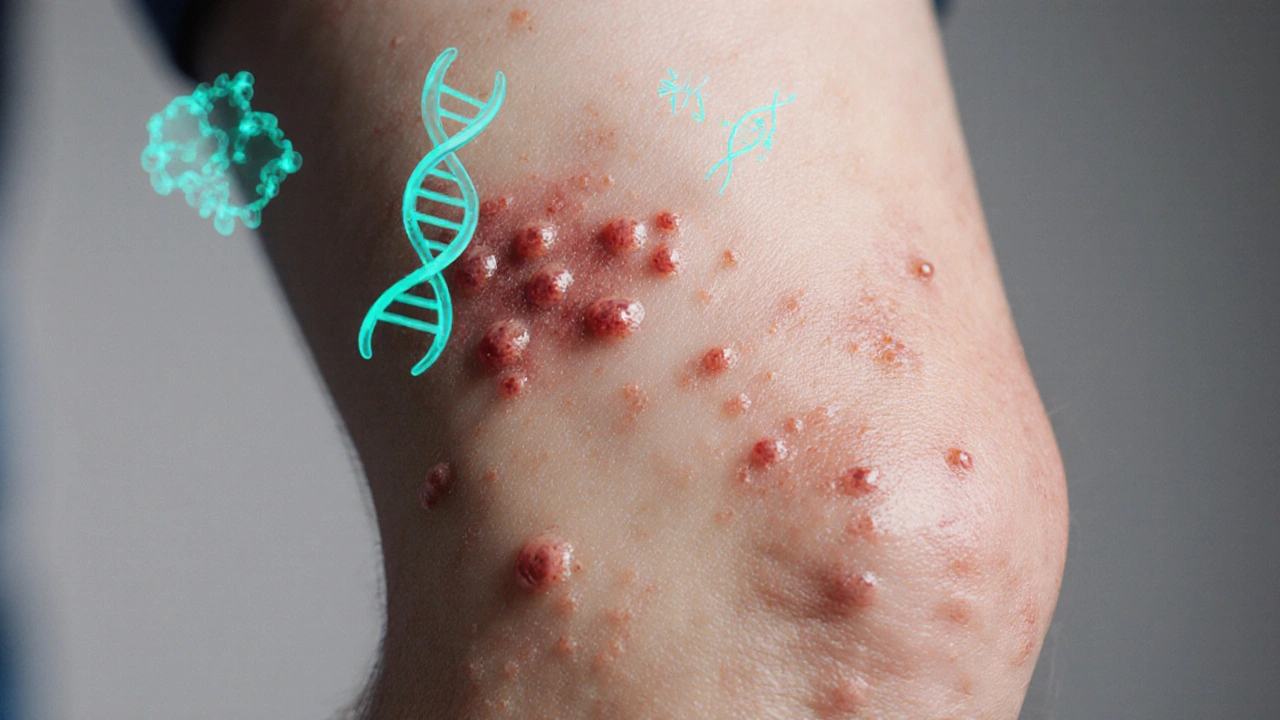Dermatitis Herpetiformis: Symptoms, Causes, and Treatment
When dealing with Dermatitis Herpetiformis, a chronic, itchy, blister‑forming skin disorder tied to gluten intolerance. Also known as DH, it often shows up as clusters of tiny bumps that burn and itch, most commonly on elbows, knees, and the buttocks. This condition is not just a skin problem; it’s a window into what’s happening inside the gut.
Related Conditions and Core Treatments
One of the strongest connections is with celiac disease, an autoimmune reaction to gluten that damages the small intestine. People with celiac disease produce the same IgA antibodies that trigger the skin rash of dermatitis herpetiformis, so a diagnosis of DH often leads to a deeper look for hidden celiac disease. Cutting gluten from the diet can calm the rash over time, but diet alone usually isn’t enough for quick relief.
The go‑to medication for fast symptom control is dapsone, an antibacterial that also suppresses the immune response causing the rash. Most patients notice a drop in itching within days, while the visible bumps fade over weeks. Regular blood monitoring is essential because dapsone can affect blood counts, but when managed well, it’s a highly effective bridge until the gluten‑free diet takes hold.
When flare‑ups do occur, especially during the early phase of gluten withdrawal, topical steroids such as clobetasol or hydrocortisone provide targeted anti‑inflammatory relief. They’re especially useful for stubborn spots that don’t respond quickly to oral meds. Applying a thin layer twice daily can reduce redness and prevent new blisters from forming, making daily life more comfortable.
Understanding how these pieces fit together helps you create a solid plan: a gluten‑free diet tackles the root cause, dapsone offers rapid systemic control, and topical steroids smooth out the edges. Together they lower the risk of long‑term complications, such as nutrient deficiencies caused by untreated celiac disease, and keep the skin from becoming a constant source of irritation.
Below you’ll find a curated set of articles that dive deeper into each of these areas—dietary management, medication dosing, side‑effect monitoring, and practical skin‑care tips. Whether you’re just starting to suspect dermatitis herpetiformis or you’re looking for ways to fine‑tune an existing regimen, the resources here will give you clear, actionable information to move forward with confidence.
How Genetics Drive Dermatitis Herpetiformis: What You Need to Know
Explore how genetics, especially HLA-DQ2/DQ8, drive dermatitis herpetiformis, its link to celiac disease, testing, family risk, and management.
Read





